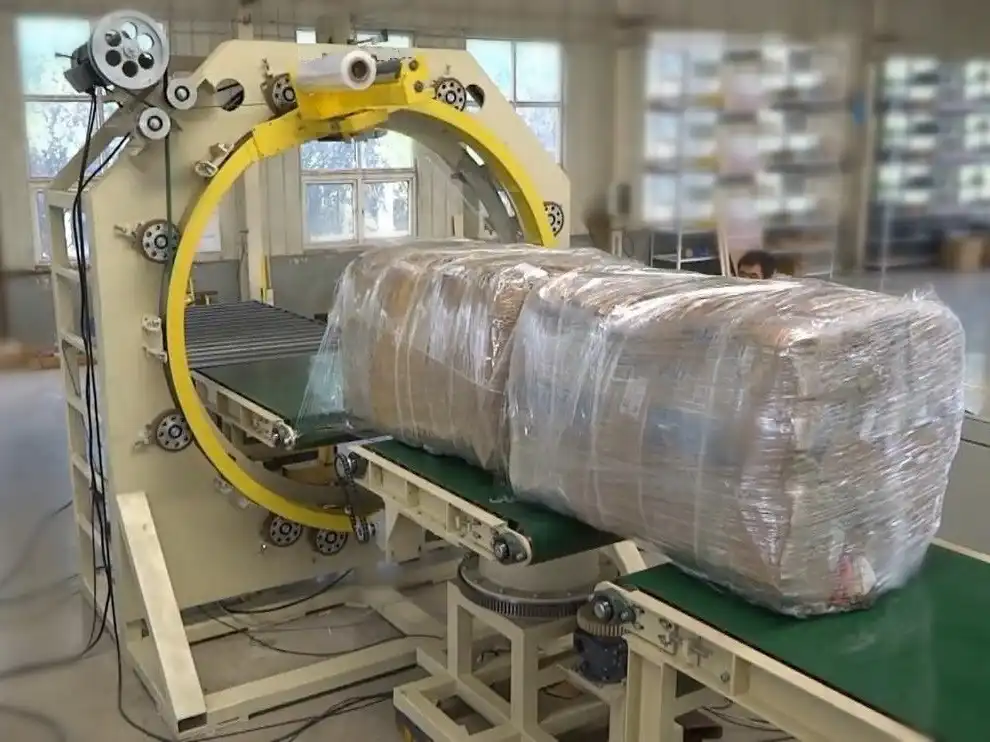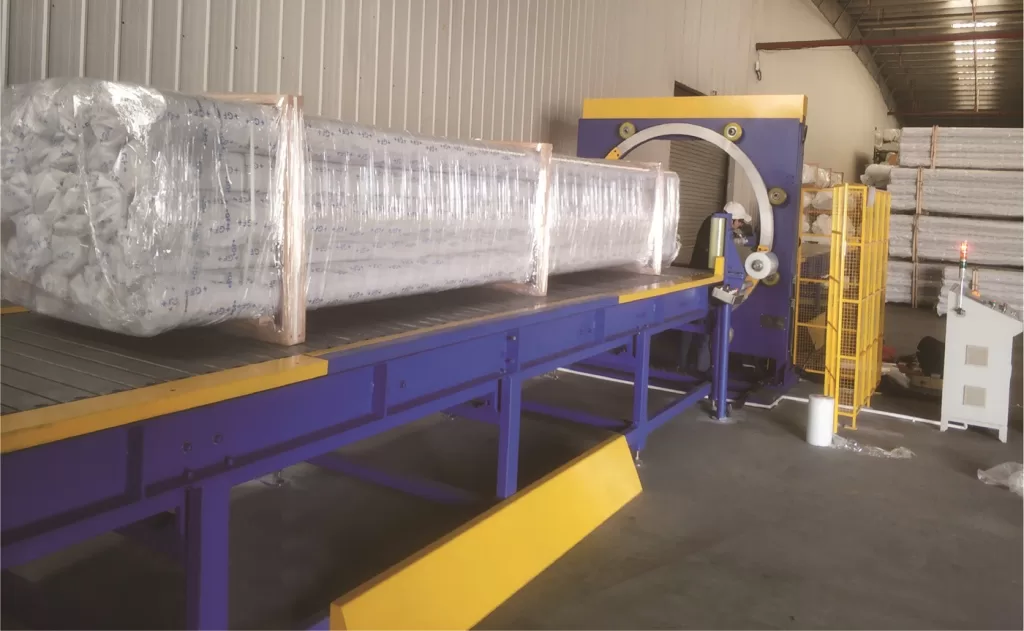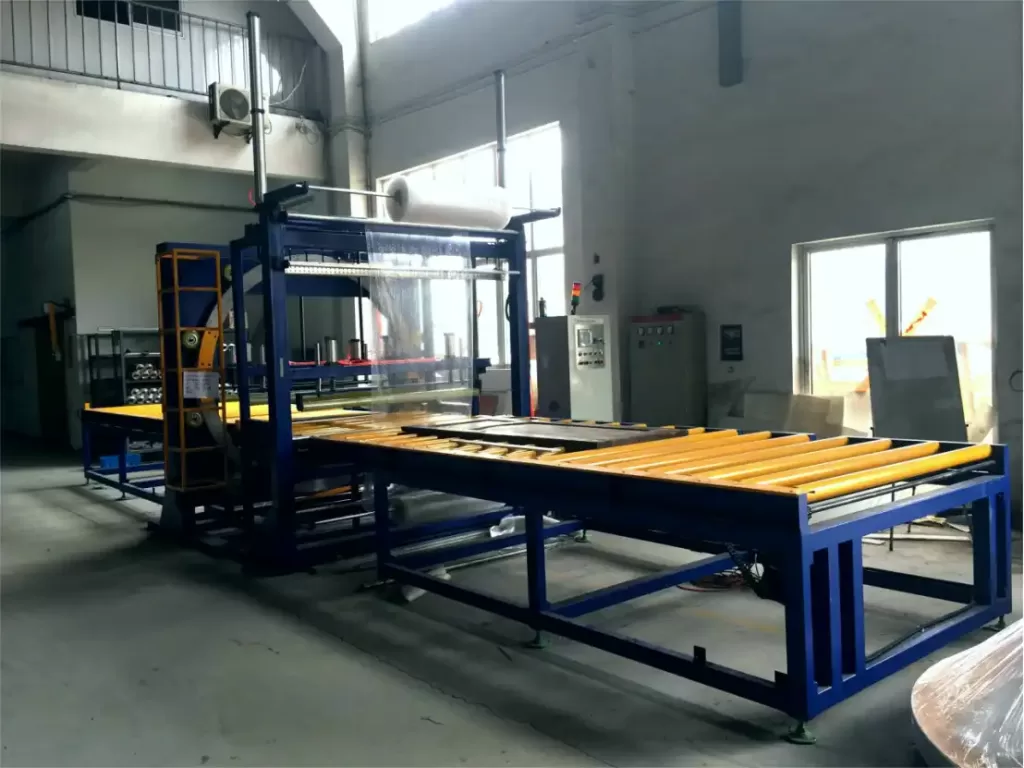Optimizing End-of-Line Packaging: A Guide to Motor and Tray Horizontal Stretch Wrappers
Efficiently packaging bulky, irregularly shaped, or sensitive items like electric motors and loaded trays presents unique challenges in many manufacturing and fabrication environments. Ensuring product protection, load stability, and handling safety while maintaining throughput requires specialized solutions. Horizontal stretch wrappers, specifically designed for these types of loads, offer a robust and automated approach to end-of-line packaging.
This guide explores the functionality and benefits of motor wrapping machines and tray horizontal stretch wrappers, aligning with the practical, instructional focus valued in the industry.

Understanding Horizontal Stretch Wrapping Technology
Unlike traditional turntable or rotary arm pallet wrappers where the load rotates or the film carriage moves around a stationary pallet, horizontal stretch wrappers typically pass the product horizontally through a rotating ring or orbiting arm that dispenses stretch film. This method is ideal for long, narrow, or unstable items that are difficult to secure on a standard pallet wrapper.
Key operational aspects include:
- Infeed and Outfeed Conveyors: Transport the product into and out of the wrapping zone.
- Film Carriage/Ring: Dispenses the stretch film, often with pre-stretch capabilities to maximize film yield and load containment.
- Wrapping Cycle: Applies multiple layers of film around the product as it moves through the machine.
- Film Clamping and Cutting: Automated systems typically clamp the film to start the cycle and cut it upon completion.
Dedicated Solutions: Motor Wrapping Machines
Wrapping electric motors requires careful consideration due to their weight, potentially sensitive components (shafts, connectors, cooling fins), and often irregular shapes.
(Video: Example of a horizontal wrapping machine in operation)
Motor-specific horizontal wrappers address these challenges through:
- Secure Product Handling: Conveyor systems or specialized fixtures hold the motor securely during the wrapping process.
- Controlled Film Tension: Precise tension control mechanisms, often utilizing servo motors, apply the stretch film snugly without exerting excessive force that could damage motor components or housings.
- Complete Coverage: The orbital wrapping action ensures 360-degree coverage, protecting the entire motor surface, including ends and contours, from dust, moisture, and scratches during transit and storage.

six sides automatic horizontal stretch wrapper Dedicated Solutions: Tray Horizontal Stretch Wrappers
Trays loaded with components, kits, or finished goods often require bundling to prevent items from shifting, spilling, or getting lost. Horizontal stretch wrappers designed for trays provide effective unitization.
These systems typically feature:
- Conveyorized Transport: Smoothly moves trays, whether individual or stacked, through the wrapping station.
- Vertical Wrapping Axis: While the tray moves horizontally, the film is often applied from a carriage moving vertically or orbiting in a plane perpendicular to the conveyor, effectively bundling the contents to the tray.
- Containment Focus: The primary goal is to secure the tray's contents, creating a stable unit load ready for downstream handling or shipping.
Core Advantages of Horizontal Stretch Wrapping for Motors and Trays
Implementing automated horizontal stretch wrapping offers significant operational benefits:
1. Enhanced Product Protection
The multi-layer application of stretch film provides a protective barrier against environmental factors like dust, dirt, and moisture. It also shields surfaces from scratches and minor impacts during handling. Proper tension ensures components are held securely, minimizing internal movement.
2. Improved Load Stability and Handling
Horizontal wrapping tightly bundles motors or secures tray contents, creating a more stable unit. This is crucial for safe and efficient movement via forklifts, conveyors, or manual handling, reducing the risk of product damage or spills.
3. Increased Operational Efficiency
- Automation: Reduces or eliminates the need for manual wrapping, freeing up labor for other tasks.
- Speed: These machines operate continuously and at higher speeds than manual methods, increasing throughput.
- Reliability: Built with industrial-grade components, these wrappers are designed for durability and high uptime in demanding production environments.
4. Material and Cost Savings
- Optimized Film Usage: Powered pre-stretch mechanisms can significantly increase the yield from each roll of stretch film compared to manual application.
- Reduced Waste: Consistent, automated application minimizes film wastage.
- Lower Damage Costs: Improved protection and stability lead to fewer instances of product damage during shipping and handling, reducing replacement costs and claims.

1horizontal wrapping machine gg1500 ce approved convey 5. Workplace Safety Improvements
Automating the wrapping process eliminates the ergonomic risks associated with manually handling heavy motors or awkwardly maneuvering film around large trays. This reduces the potential for back injuries, strains, and other manual handling-related incidents.
Key Considerations When Selecting a System
Choosing the right horizontal stretch wrapper involves evaluating several factors:
- Product Specifications: Dimensions (length, width, height), weight, and stability of the motors or trays being wrapped.
- Throughput Requirements: The number of units that need to be wrapped per hour or per shift.
- Stretch Film Type: Compatibility with desired film types, thicknesses (gauges), and pre-stretch levels.
- Level of Automation: Standalone machine versus fully integrated into an automated packaging line.
- Footprint and Layout: Available space within the facility.
- Maintenance and Support: Availability of spare parts, technical support, and service plans.

horizontal oribital bubble film wrapper Conclusion
Motor wrapping machines and tray horizontal stretch wrappers provide specialized, automated solutions for common packaging challenges in fabrication and manufacturing. By delivering enhanced product protection, improved load stability, greater operational efficiency, material cost savings, and increased workplace safety, these systems represent a valuable investment for optimizing end-of-line packaging processes. Carefully evaluating specific application needs against machine capabilities ensures the selection of a system that delivers long-term performance and value.


